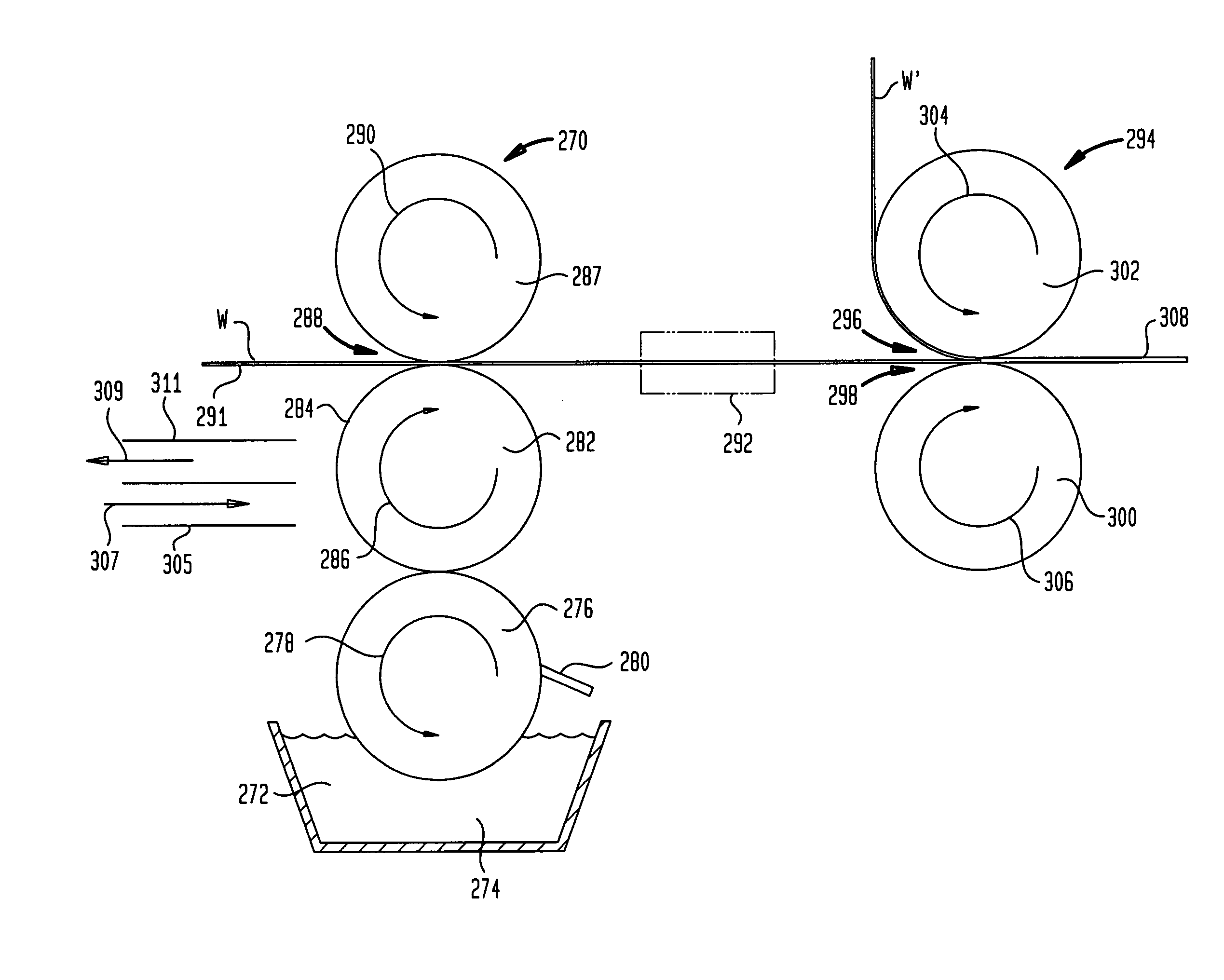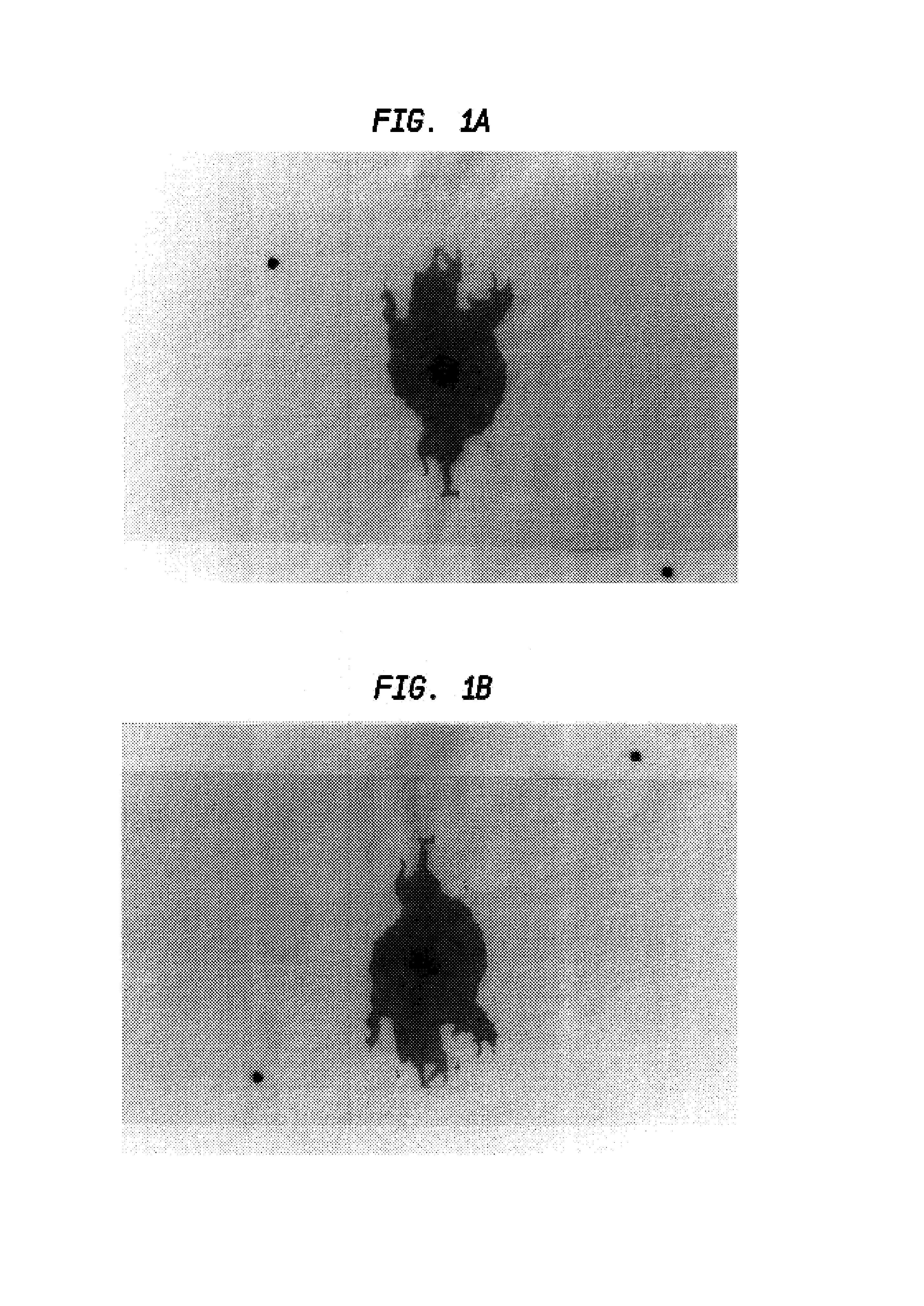Absorbent sheet exhibiting resistance to moisture penetration
a technology of absorbent paper and moisture penetration, applied in the field of absorbent paper sheets, can solve problems such as poor distribution properties
- Summary
- Abstract
- Description
- Claims
- Application Information
AI Technical Summary
Benefits of technology
Problems solved by technology
Method used
Image
Examples
example 1
Wax Treated 2-Ply Towel
[0124]Surface IR chromatography was used to detect wax penetration of a MICHEM® M48040M2 dispersion applied to a 2-ply wet pressed towel using the procedure described above. FIG. 3 is a schematic diagram showing an exploded view of the towel 10 having a first ply 12 with a treated surface 14 and an inner ply surface 16. Towel 10 is also provided with a second ply 18 having an inner untreated ply surface 20 and an outer untreated ply surface 22. These surfaces were compared with an untreated towel.
[0125]In FIG. 4 there is shown the relevant spectra for the various surfaces of treated 2-ply towel 10, with the wax applied exhibiting a peak at 2914 cm−1. The treated surface 14 of ply 12 had a peak height of approximately 0.019 absorbance units at this wavelength, while the inner ply had a peak height of approximately 0.021 absorbance units indicating the wax had fully penetrated the first ply. On the other hand, surfaces 20 and 22 of untreated ply 18 exhibited abs...
example 2
Wax Treated Air-laid Sheet
[0126]Surface IR chromatography was also used to detect wax penetration of a MICHEM® M48040M2 dispersion applied to an air-laid sheet in accordance with the invention. Here, the (unitary or single ply) sheet was split as shown schematically in FIG. 5. In FIG. 5, there is shown an air-laid sheet 30 having a treated upper surface 32, a middle portion 34 and an untreated surface 36. The sheet was split along dotted line 38 and spectra were taken at surfaces 32,36 and at the split surface 40 proximate to treated surface 32 and the split surface 42 proximate to untreated surface 36. Results appear in FIG. 6. The wax found in the middle of the sheet was about 50 percent of that on the surface. That is, the peak height was 0.116 absorbance units at surface 32 (@ 2915 cm−1) but only 0.061 absorbance units (@2915 cm−1) at surface 40. The absorbance values found at surfaces 42 and 36 were close to the values for untreated air-laid sheet indicating that the wax did no...
examples 3 and 4
[0127]These examples demonstrate dramatic changes in water penetration delay while permeability and wet tensile remain constant.
[0128]2-ply toweling having a basis weight as set forth in Table 1 prepared by conventional wet press technology was sprayed on one side with the amount indicated of a wax dispersion containing approximately 20 to 40 percent solids, the solids primarily being waxes having molecular weight in the range of about 500 to 3000 such as paraffins along with naturally occurring waxes such as carnauba wax. The approximate melting point of the wax mixture was under 100° C. The samples were cured in an oven at approximately 100° C. for 5 minutes.
[0129]The properties of the samples of the invention as compared to the control are set forth in Table 1 which illustrate that the moisture penetration delay of the treated side increased greatly while air permeability, dry tensile and wet tensile remained about equal to or only slightly less than that of the control. The untr...
PUM
| Property | Measurement | Unit |
|---|---|---|
| contact angle | aaaaa | aaaaa |
| contact angle | aaaaa | aaaaa |
| contact angle | aaaaa | aaaaa |
Abstract
Description
Claims
Application Information
 Login to View More
Login to View More - R&D
- Intellectual Property
- Life Sciences
- Materials
- Tech Scout
- Unparalleled Data Quality
- Higher Quality Content
- 60% Fewer Hallucinations
Browse by: Latest US Patents, China's latest patents, Technical Efficacy Thesaurus, Application Domain, Technology Topic, Popular Technical Reports.
© 2025 PatSnap. All rights reserved.Legal|Privacy policy|Modern Slavery Act Transparency Statement|Sitemap|About US| Contact US: help@patsnap.com



